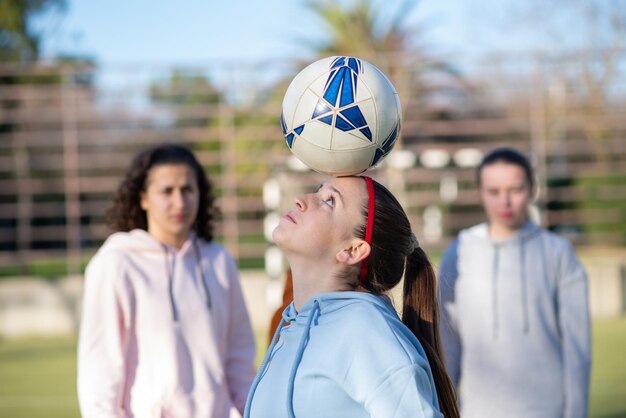
Throughout history, there have been moments that define the resilience of the human spirit, showcasing our ability to rise from adversity. Whether in sports, business, or personal life, comebacks serve as powerful reminders that setbacks are often just setups for greater victories. The greatest comebacks not only captivate our imagination but also inspire us to persevere through our challenges.
In the world of sports, some of the most memorable moments come from athletes who defied the odds, turning what seemed like certain defeat into glorious triumph. From last-minute goals to miraculous plays, these athletes have left an indelible mark on the hearts of fans and etched their names in history. Their stories are a testament to the idea that with determination and hard work, anything is possible.
Beyond the arena, comebacks occur in various walks of life, from entrepreneurs who rebuild their businesses after failure to individuals who overcome personal struggles. These narratives reflect a universal truth: resilience is a key ingredient to success. This article will explore some of the greatest comebacks ever, examining the circumstances that led to these pivotal moments and the lessons we can learn from them.
Iconic Sports Comebacks That Captivated Fans Worldwide
The world of sports has seen its fair share of incredible comebacks, moments that have not only thrilled fans but also redefined the essence of determination and resilience. These unforgettable instances showcase athletes pushing their limits, defying the odds, and ultimately emerging victorious against overwhelming challenges.
From historic matches to breathtaking performances, these comebacks serve as a reminder that in sports, anything is possible. Here are some of the most iconic comebacks that have captivated audiences around the globe:
-
Super Bowl LI: New England Patriots vs. Atlanta Falcons (2017)
In one of the most dramatic comebacks in NFL history, the New England Patriots overcame a 28-3 deficit against the Atlanta Falcons. Led by quarterback Tom Brady, the Patriots scored 31 unanswered points, culminating in a 34-28 victory in overtime.
-
Roger Federer at Wimbledon (2019)
In a thrilling final against Novak Djokovic, Roger Federer found himself down two sets to one. With remarkable skill and determination, Federer pushed the match to a fifth set, where he had two championship points but ultimately lost in a historic tiebreaker.
-
2004 Red Sox: Breaking the Curse
The Boston Red Sox made history by coming back from a 3-0 series deficit in the ALCS against the New York Yankees. They went on to win the World Series, ending an 86-year championship drought.
-
Manchester United in the 1999 UEFA Champions League Final
In a stunning display of perseverance, Manchester United came from behind to beat Bayern Munich 2-1. Trailing 1-0 in injury time, United scored two goals in quick succession, securing their place in football history.
These remarkable comebacks remind us of the unpredictable nature of sports, where hope and perseverance can lead to extraordinary outcomes. They not only entertain but also inspire fans, demonstrating that no challenge is insurmountable.
Unforgettable Comebacks in History That Changed the Game
Throughout history, there have been moments that not only surprised the world but also reshaped the future. Comebacks have a unique way of demonstrating resilience, determination, and the unyielding human spirit. From sports to politics, these remarkable recoveries often serve as a testament to the idea that no situation is truly hopeless.
In this article, we will explore some of the most unforgettable comebacks that have left an indelible mark on history. These stories showcase not just individual triumphs, but also collective victories that changed the course of events and inspired generations.
Remarkable Comebacks in Sports
- Super Bowl LI (2017): The New England Patriots made history by overcoming a 28-3 deficit against the Atlanta Falcons, ultimately winning the game in overtime. This 34-28 victory is considered one of the greatest comebacks in sports history.
- Manchester United (1999 UEFA Champions League Final): Trailing 1-0 against Bayern Munich, Manchester United scored two late goals in injury time to secure a dramatic 2-1 victory, completing a historic treble.
- Michael Jordan’s Return (1995): After retiring from basketball, Michael Jordan returned to the Chicago Bulls and led the team to three consecutive NBA championships, solidifying his legacy as one of the greatest athletes of all time.
Historic Political Comebacks
- Winston Churchill (1940): After the fall of France in World War II, Churchill rallied the British people with his powerful speeches and leadership, transforming the British war effort and ultimately leading to victory against Nazi Germany.
- Nelson Mandela (1990): After 27 years in prison, Mandela emerged as a leader in the fight against apartheid, eventually becoming South Africa’s first Black president and symbolizing hope and reconciliation.
- Abraham Lincoln (1860): After losing his bid for the Senate, Lincoln persevered and won the presidency in 1860, guiding the nation through the Civil War and ultimately abolishing slavery.
These remarkable comebacks serve as reminders that resilience and determination can change the course of history. Whether on the field or in the political arena, the stories of these individuals inspire us to believe in the power of a comeback.
Conclusion: Celebrating Resilience and Triumph
Throughout history, remarkable personal comebacks have showcased the incredible strength of the human spirit. These stories remind us that setbacks are not the end; rather, they can be powerful catalysts for transformation. Whether it’s overcoming personal struggles, health challenges, or professional setbacks, each comeback highlights an individual’s unwavering determination to rise again and succeed.
In reflecting on these stories, we see a common thread: resilience. The ability to adapt, learn, and persevere in the face of adversity is what sets these individuals apart. As we celebrate their journeys, let us draw inspiration from their triumphs and recognize that our own challenges can lead to growth and empowerment.
Key Takeaways from Remarkable Comebacks
- Resilience is essential: Each story illustrates the power of mental strength in overcoming obstacles.
- Support systems matter: Many successful comebacks are bolstered by the love and encouragement of friends, family, and mentors.
- Setbacks can be transformative: Often, the toughest experiences can lead to the most significant personal growth.
- Never lose hope: Belief in oneself and the future can inspire change, even in the darkest moments.
As we honor these stories of resilience and triumph, may we also embrace the challenges in our own lives, knowing that they, too, can lead us to our greatest comebacks.








